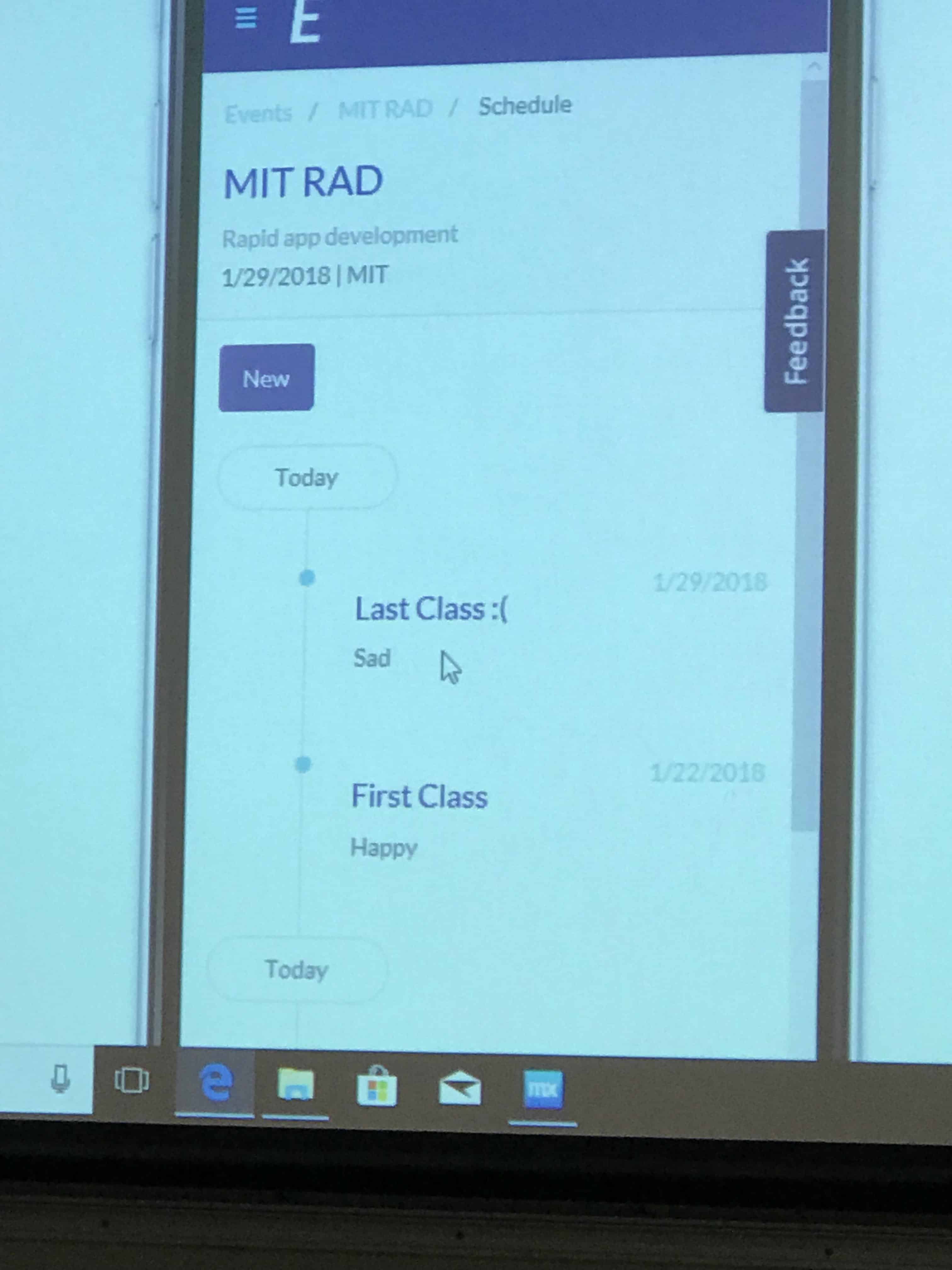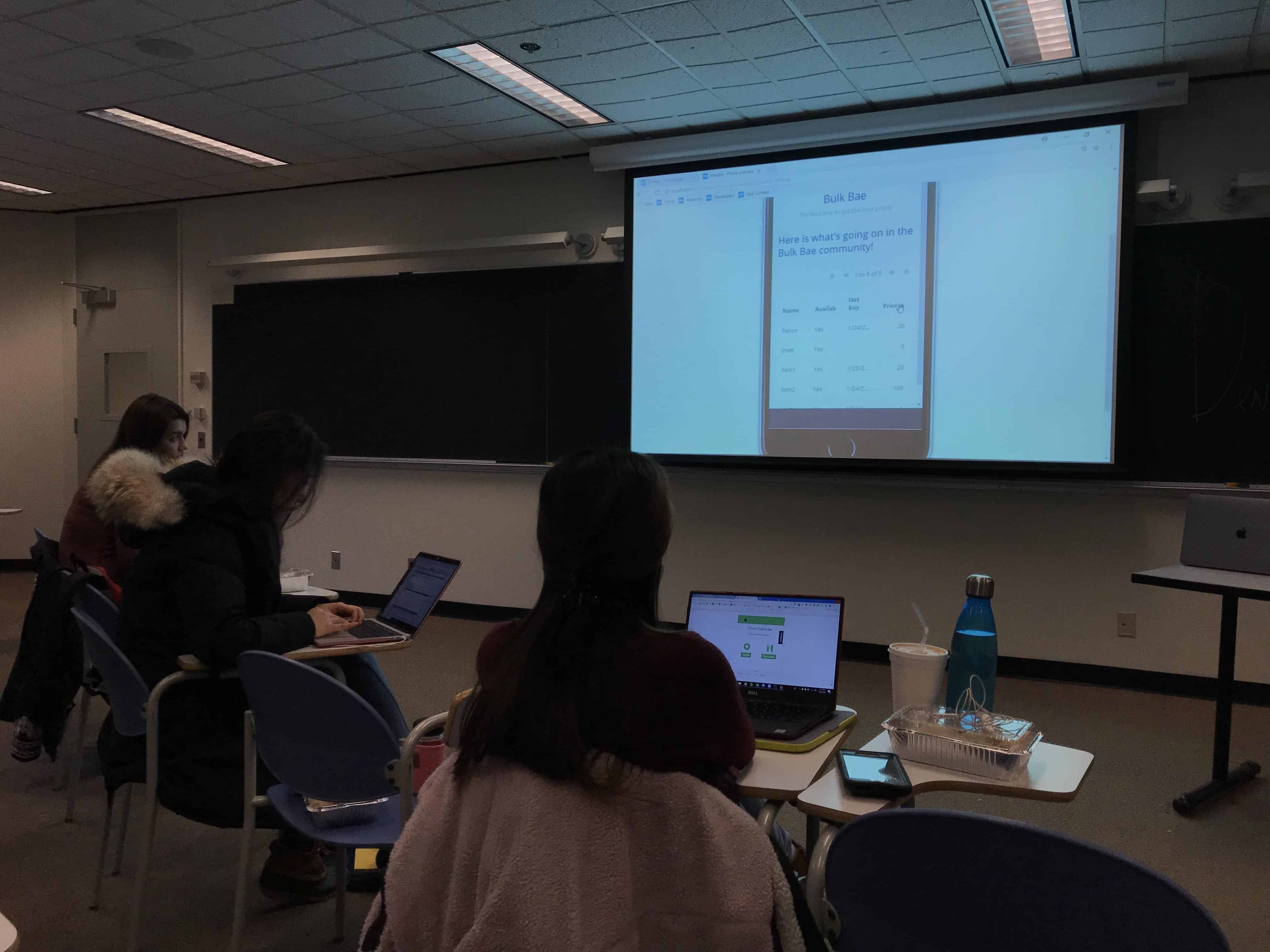As an MIT math and computer science alum, I am thrilled each year to head back to campus to teach students low-code development through my for-credit rapid application development course. The course runs in January as part of the winter semester Independent Activities Period. I always look forward to seeing what kinds of applications the students manage to build in the space of less than a month.
Through my three years of teaching this course at MIT, I’ve realized the main benefit schools receive when teaching low-code development teaching with tools like Mendix in the curriculum: getting students ready for the modern workforce.
School’s in session
The course overview states: “If you are interested in solving business problems without worrying about hardcore coding, this class is for you.” The class does not provide training in specific coding skill sets or languages. Instead, it is focused on coaching students on how to build mobile software applications using low-code visual modeling.
While low-code is a much less technical approach to development than coding is, it’s just as complex. Students must consider the various application layers involved with and the logic of building applications, rather than learn a specific programming language.
Not teaching programming in a course dedicated to building applications may seem counter-intuitive. However, there are two major benefits to adopting low-code development in your curriculum that help prepare students for their careers.
Boost students’ tech skills
Not everyone has the inclination for coding and some students who don’t have early programming exposure can feel overwhelmed by code. Schools that adopt low-code tools like Mendix can make software development accessible to a much wider audience than just those with an inclination towards coding.
Students with a logical mind—whether from business, engineering, medicine or any other discipline—can learn the fundamentals of building app solutions, a skill that’s highly sought after by organizations.
Analysis carried out by LinkedIn suggests that mobile development skills rank as the 9th most in-demand tech skill sought by employers. In The Hill, Reid Wilson writes, “The Bureau of Labor Statistics estimates the economy will need as many as 100,000 new information technology workers per year over the next decade. Right now, only about 60,000 of these workers enter the workforce each year.” Professors need to prepare students for the future, to meet industry demands.
Consider creativity and soft skills
For me, as a teacher, the first and last days of class are the best days. On the first day, I ask students to think of what they want to build, and I purposely leave this question open-ended. They need to build applications that solve real-world problems. Each year, I am impressed by students’ ideas and creativity. Some students think of daily productivity apps, others of food-tracking apps or happiness and mindfulness apps. Other students even think about creating voting applications or apps to help with the healthcare and education systems. It’s rewarding to equip them with the right tools to creatively solve business problems.

Referring again to LinkedIn’s analysis, some 57 percent of leaders say that employees’ soft skills are more important than hard skills. Students need to be able to communicate their solutions and think outside the box. In my class, I expect students to think creatively, define their applications, and build and present them all in a few weeks. I want students to learn how to apply their creative minds to tech problems and present their ideas clearly. On the last day of class, I sit back and see what my students have been able to create in less than a month. At this point, freshmen novices and graduate-level students with previous developer experience alike will have built and deployed a working and functioning mobile app.

If you’re thinking of teaching low-code approaches to application development, then know that there’s more to it than expecting students to turn up to lectures and do a few in-class lab sessions. Online resources are essential. Our team offers a Professor’s Only Learning Path, with resources such as sample syllabi, project assignments and pre-class checklists. In addition, students can use tutorials to better understand the fundamentals of low-code development or to better understand specific topics like data modeling, business logic, engaging user experiences and intuitive interfaces.
A lot of my students decide to continue their learning and take the Rapid Developer Exam and become a Certified Rapid Developer. The certification is a great addition to their resumes given the current tech skills shortage. The exam is offered for free by the Mendix University Program.

